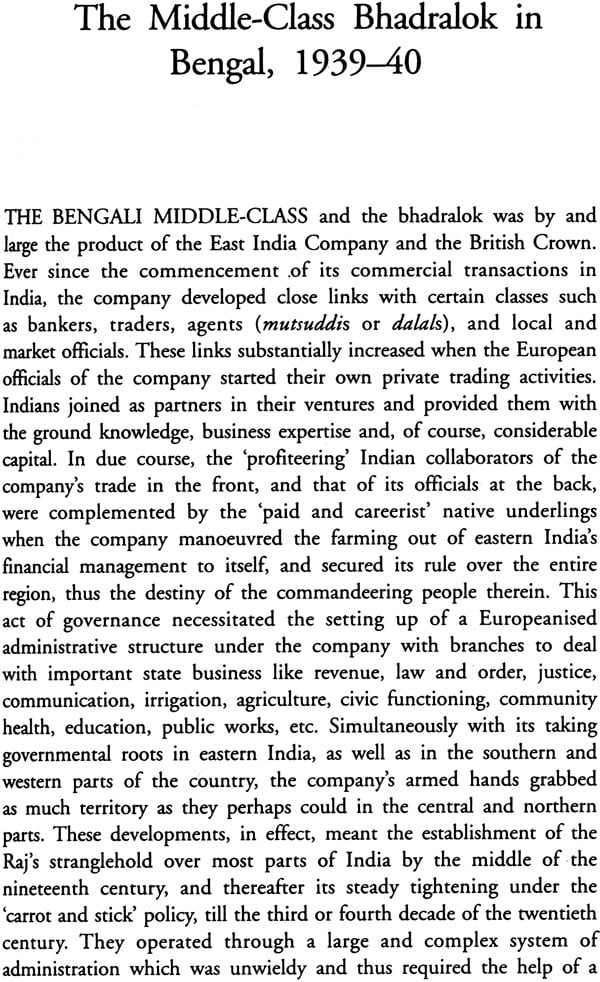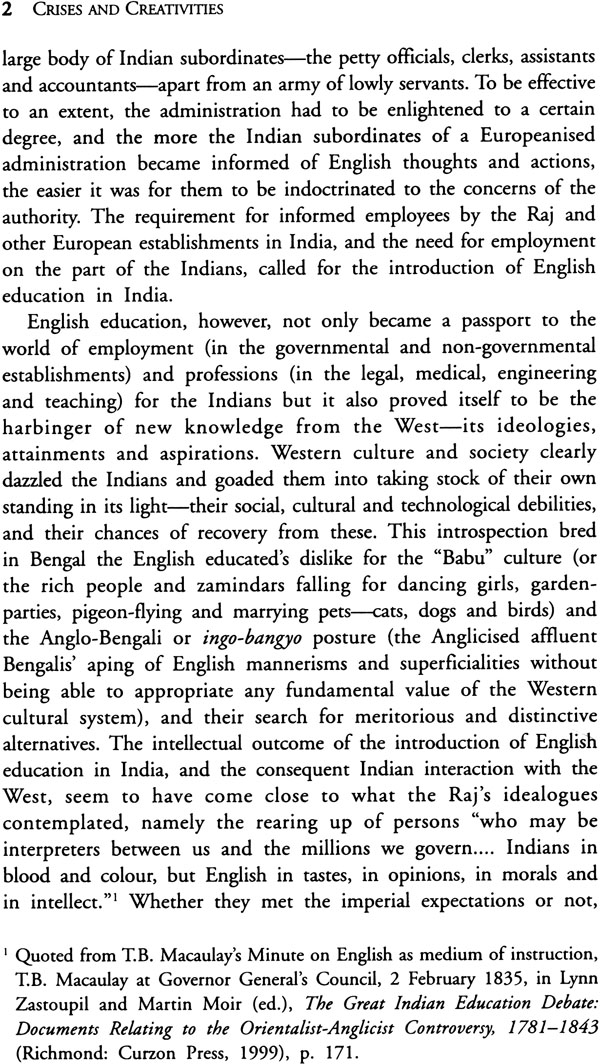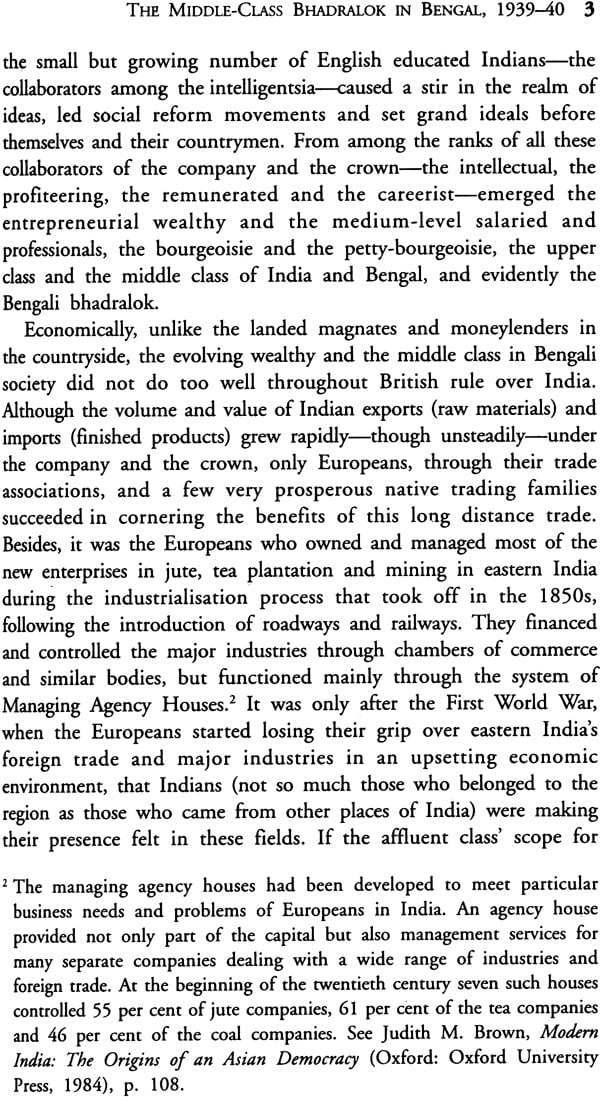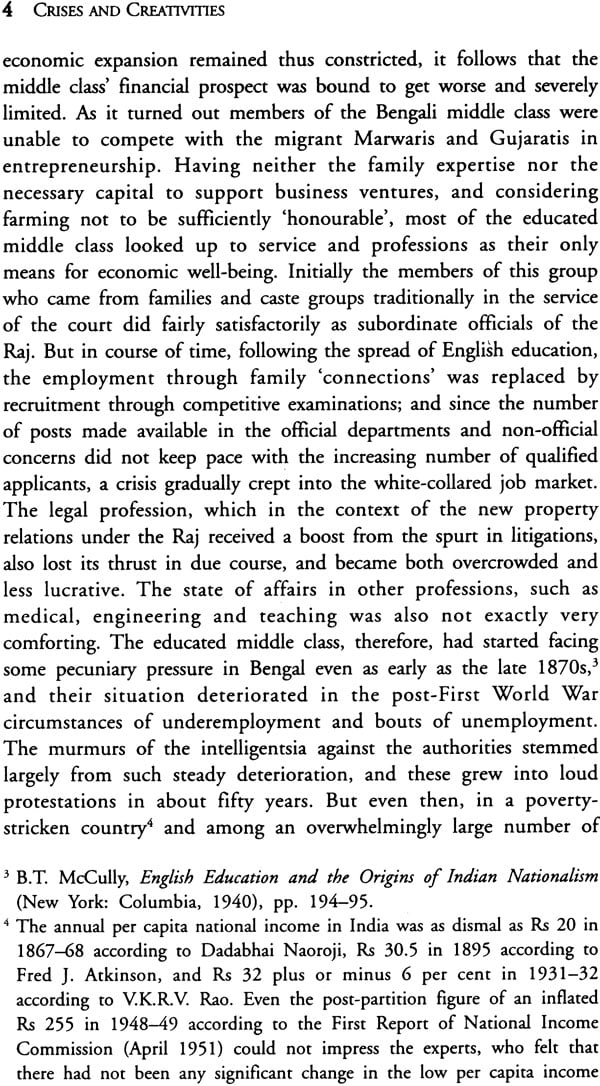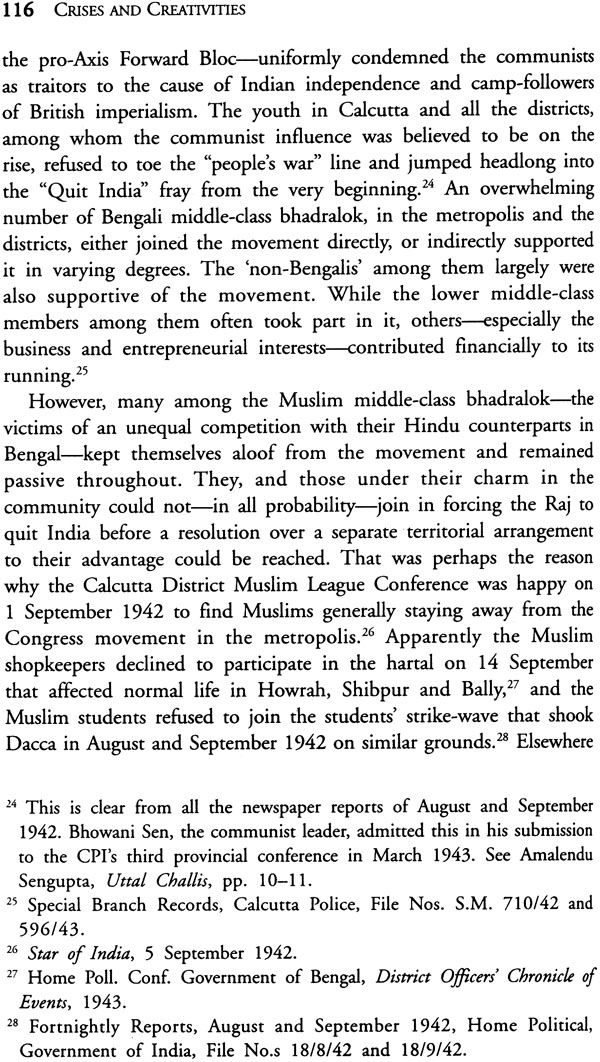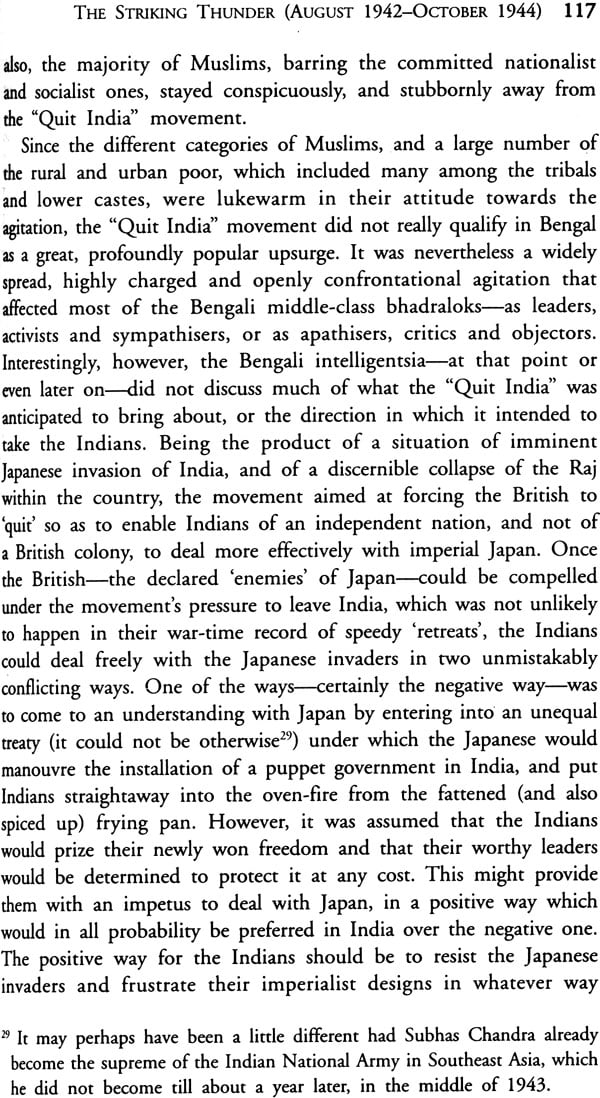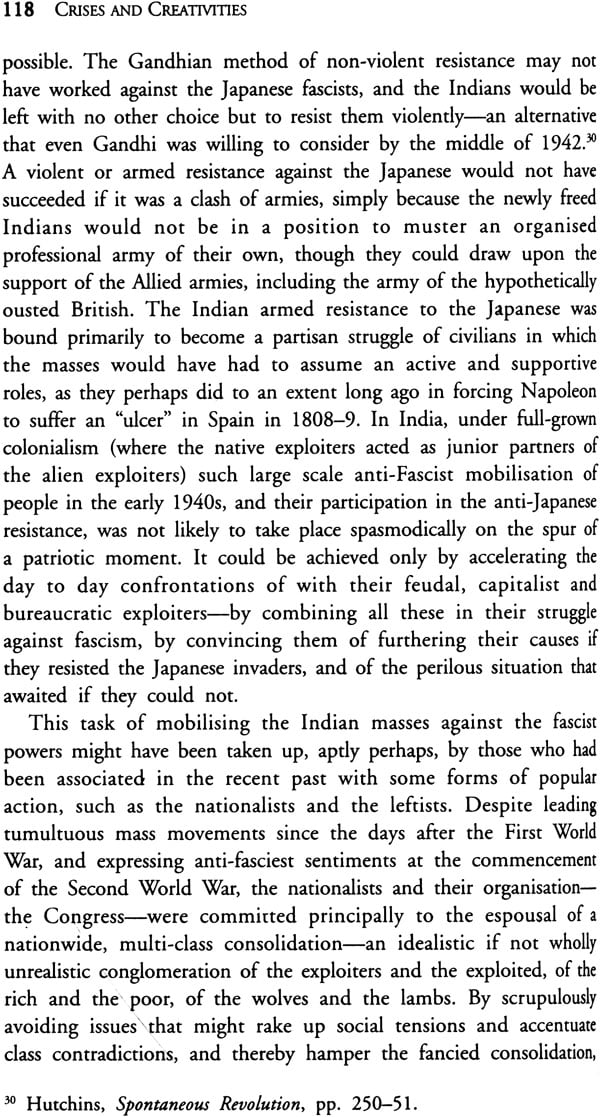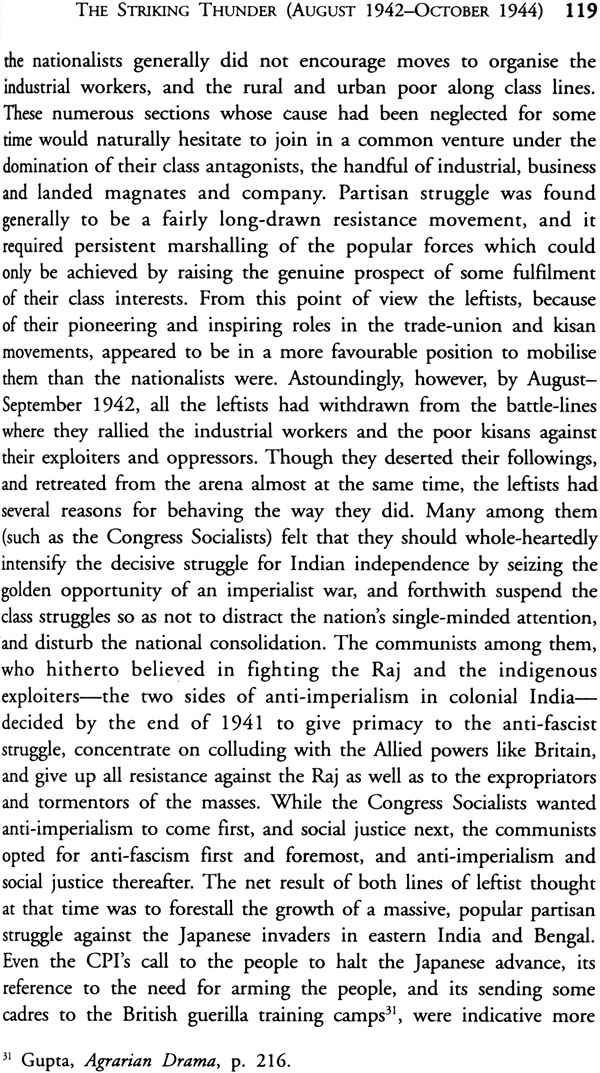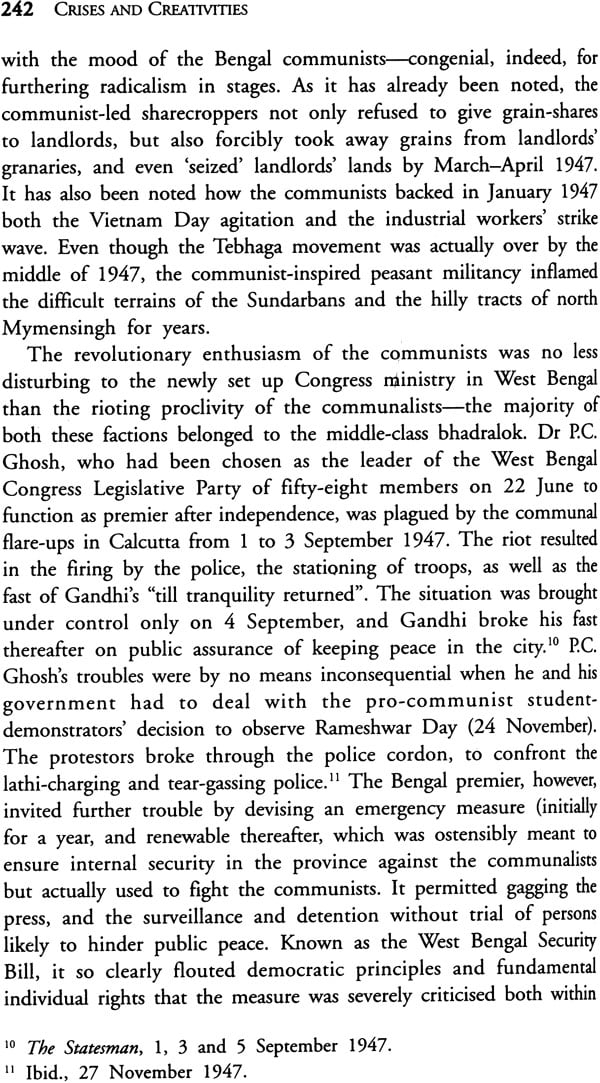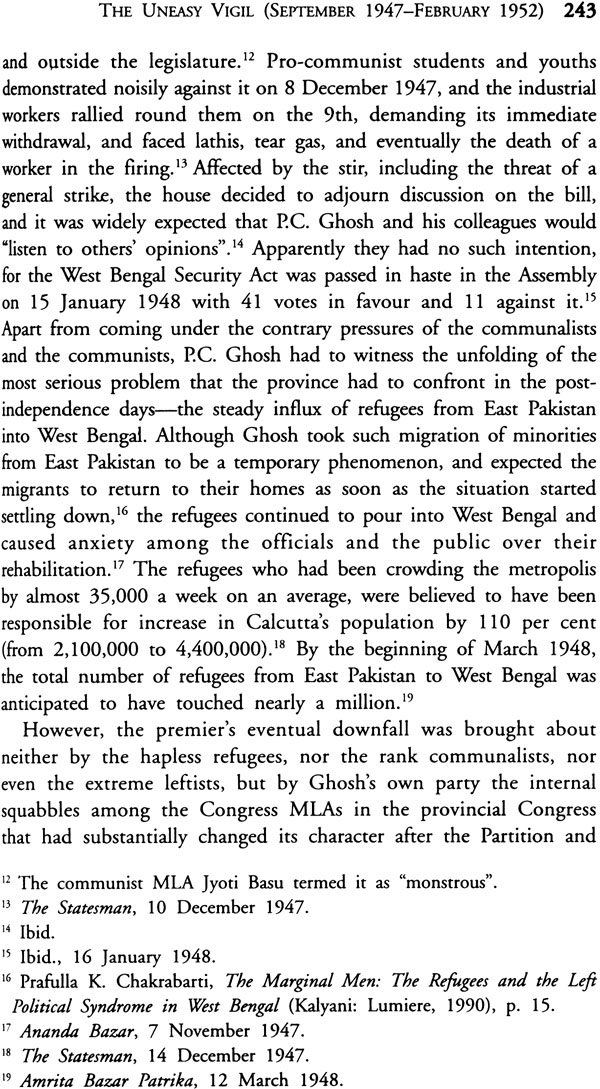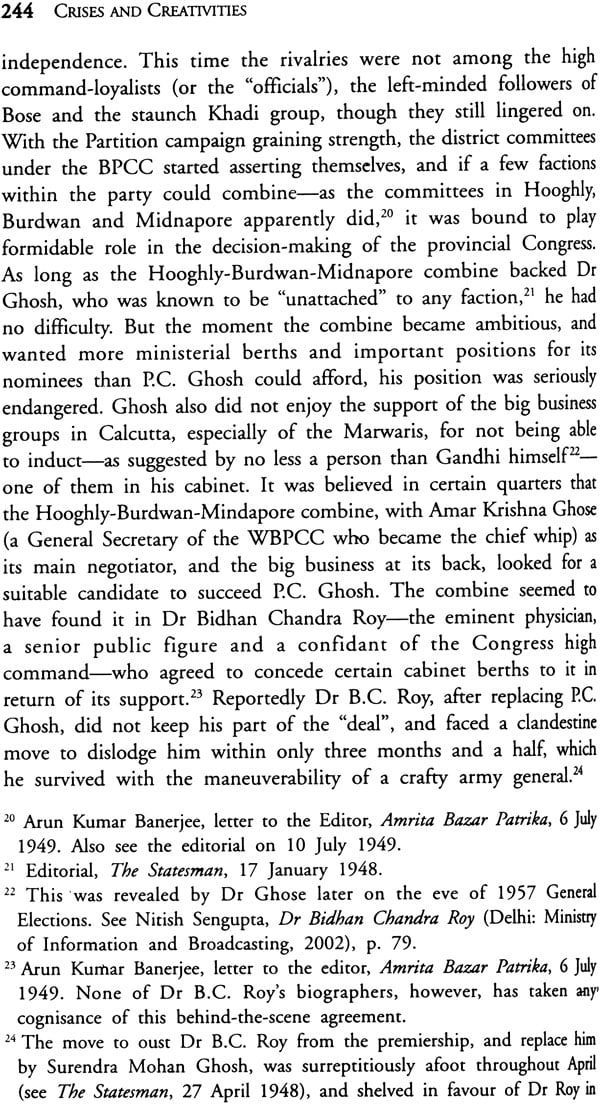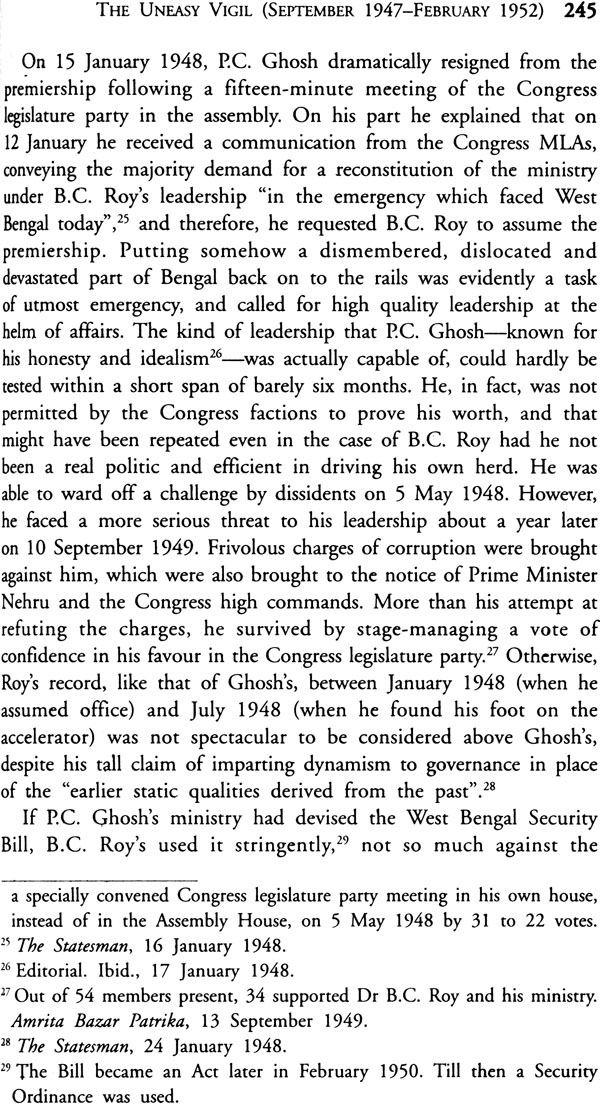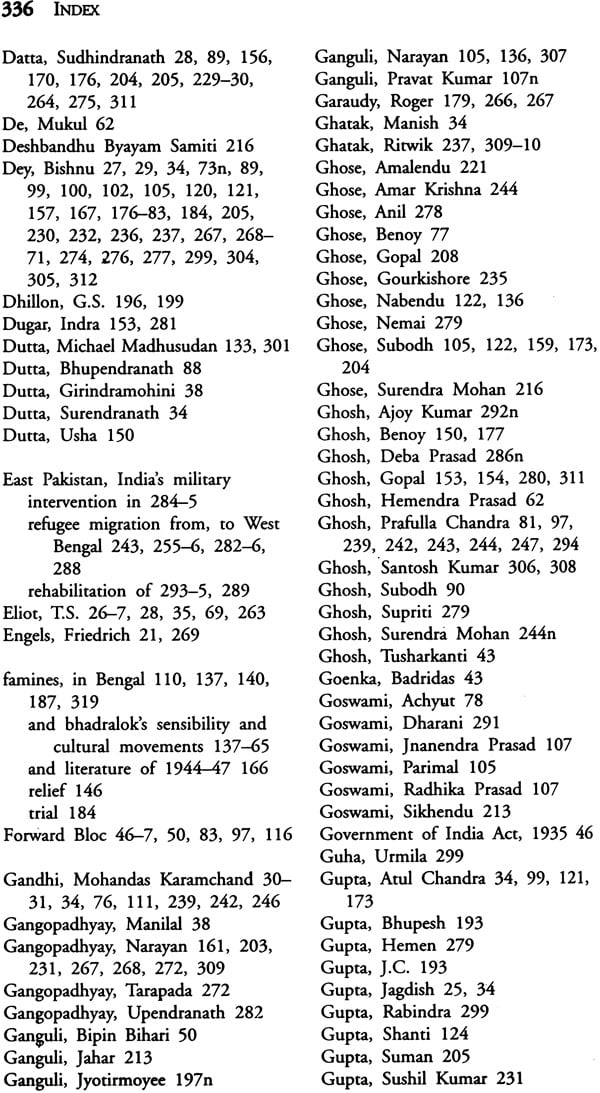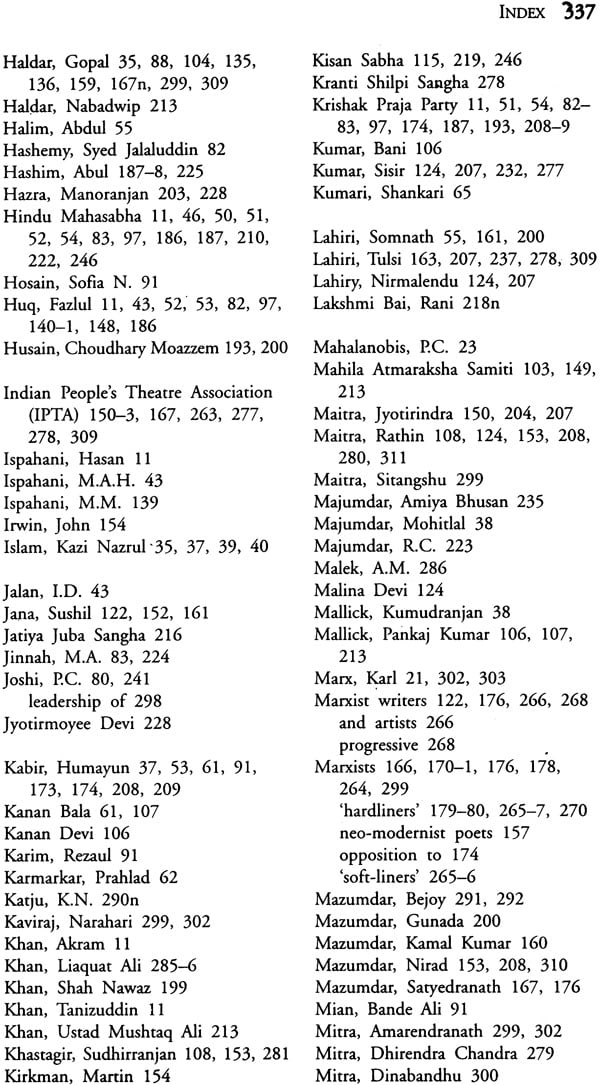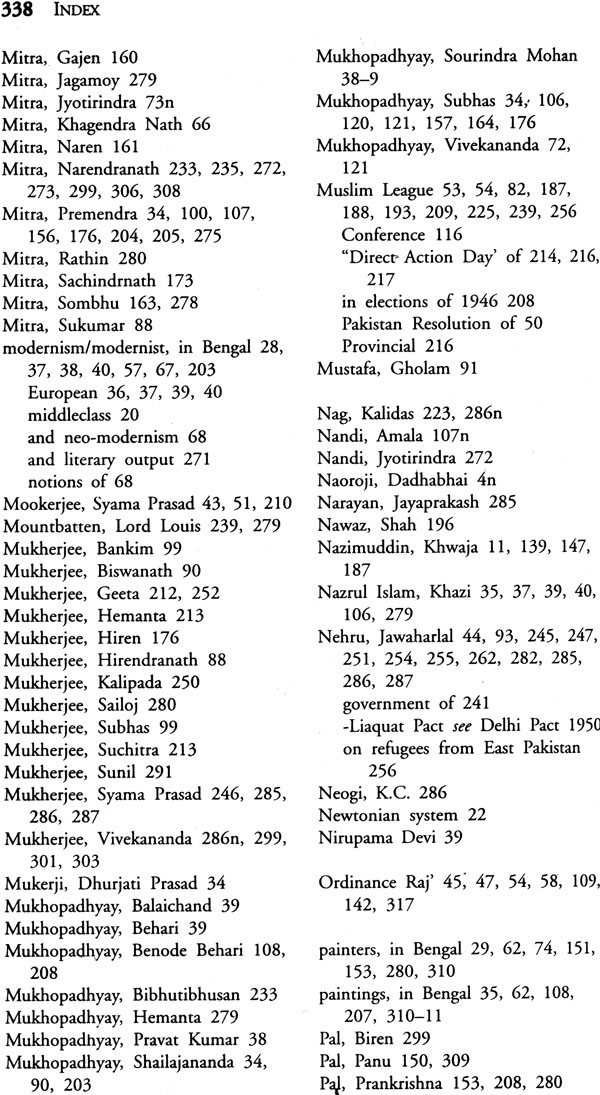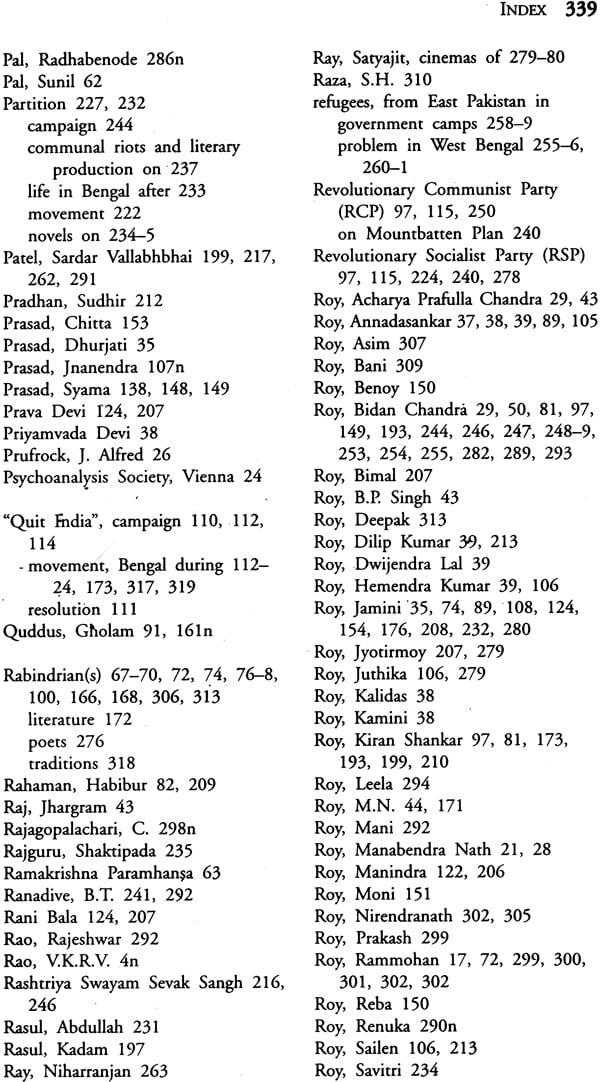
Crises and Creativities (Middle-Class Bhadralok in Bengal c. 1939-52)
Book Specification
| Item Code: | NAH273 |
| Author: | Amit Kumar Gupta |
| Publisher: | Orient Blackswan Pvt. Ltd. |
| Language: | English |
| Edition: | 2009 |
| ISBN: | 9788125037033 |
| Pages: | 352 |
| Cover: | Hardcover |
| Other Details | 8.5 inch X 5.5 inch |
| Weight | 500 gm |
Book Description
About the Book
The 1940s was the decade of crisis and change in Bengal. The years that began with famine, war and devastation ended with rioting, death and mass migration as a land, its people and its soul were partitioned. In the darkness of terrible human tragedy, However, twinkled significant triumphs of human achievement. Bengali intellectualism flourished on either side of Independence and new landmarks were erected in thought art and aesthetics. The bhadralok a multilayered social category comprising educated professionals translatable literally as ‘gentlemen’ and as ‘middle class’ in socio- economic terms confronted change with a mix of radicalism and reaction. The loftiness of the resultant intellectual product was in inverse proportion to the drastic fall in the general conditions of life. Litterateurs and artists broke out of the elitism of their predecessors to experiment with new forms. and thinkers and theoreticians adapted the philosophical debates of 20th century Europe to contemporary Indian circumstances. This book is an account of the Bengali bhadralok’s distinctive creative response to historical circumstances that remain without parallel in the rest of India in the years both before and after their passage. It evaluates aesthetic resurgence in socio-economic perspective. following its many twists and turns and mapping its essentially non-conformist. liberating and egalitarian spirit. It will be of great interest to students of social crisis and cultural change. and everyone seeking to appraise artistic responses to historical realities.
About the Author
Amit Kumar Gupta has worked as a teacher editor and researcher with the Scottish Church College, the Indian Council of Historical Research the Centre for Contemporary Studies the Nehru Memorial Museum and Library and the UGC.
Preface
At the convergence of colonialism and post-colonialism on the Indian subcontinent, from 1939-40 to 1951-52, its inhabitants generally had a hard time. It was particularly trying-very debilitating and agonisingly so-for those who happened to be living in Bengal (West Bengal from 1947). The opening of the eastern front in the Second World War found them to be stumbling from one tragic situation to another: from “black market” and “controlled” prices to Japanese air-strikes, from a “man-made” famine to communal carnages, from the partition of Bengal to an un-ending flow of the displaced and the dispossessed between the two sides. Bengal’s dismal circumstances, its recurrent civil tensions and its struggles for survival, had not apparently been altogether a one-sided story or a one-dimensional picture. There was another multi-dimensional aspect: the attempts of its twentieth century modernist practitioners of literature, fine arts and performing arts, to break free, in the tumultuous days, of the confines of ostentatious status quo elitism and breathe in the company of the struggling masses. Their ardent creative response to the harsh existential realities-artistic experimentations and ideologic exhortations-were so prolific, and with so much of energy, that they together seemed to have propelled an aesthetic and intellectual regeneration.
The significant simultaneity of the cultural ferment and the worldly collapse that I have tried to catch in Bengal is based on empirical data, which falls into certain patterns and focuses on the politically dominated and socially sensitised middle-class bhadralok. Since the category is socio-cultural, it is not too difficult for an observer to locate and size up the material conditions that affected its fortunes.
Consequently, I did not feel uncomfortable with my social science leanings in following the issues of politics, political economy and society. I had, however, found it somewhat inconvenient to fully appreciate the bhadralokist abstractions and theorisations on culture, aesthetics and intellectuality, Some reticence on this score, therefore, may have restrained me from presenting the draft of the book before scholarly gatherings or discussing my view-points with fellow- researchers. The typescript of the book has thus been read in parts, and possibly in whole, by only three persons: Suman Gupta, who offered a few useful suggestions; Maya Gupta, who tried her best to guard a wayward against pitfalls and’ the publisher’s evaluator who recommended some minor additions and alterations. I am thankful to all of them and especially to Suman for allowing me the use of a number of his English renderings of Bengali originals. I would have loved to cite some more suitable literary extracts and refer to a few more works of art and literature had I not felt the need for circumscribing the onset of tedium in the book and keeping it to a reasonable size. I have incidentally been lucky throughout to find friends whose knowledge could be used as ready reckoner. I would like particularly to thank such knowledgeables as Tapati Chakravarty, Nandita and Dilip Basu, Kunal Chakrabarty and Pradeep Dasgupta for being so tolerant of my pestering them with odd queries.
Although I started working on the project with the financial backing of the University Grants Commission, I could complete it later as a senior fellow of the Nehru Memorial Museum and Library. My gratitude to both these esteemed institutions of higher learning knows no bounds. I am also highly obliged to the authority and staff of National Archives of India (New Delhi), West Bengal State Archives (Calcutta), India Office Records, British Library (London), National Library (Calcutta), Nehru Memorial Museum and Library (New Delhi), Central Secretariat Library (New Delhi), Bangiya Sahitya Parishad Library (Calcutta), Ananda Bazar Library (Calcutta), Muzaffar Ahmad Pathagar (Calcutta), old Jugantar Office (Calcutta) and Sahitya Akademi Library (New Delhi).
But for the initiative and effort of Biswamoy Pari, a historian of repute and a close friend of mine, it would not have been possible. for my study to reach its readers in time. Hemlata, Aakash and Osamazaid of Orient Blackswan Private Limited took care for bringing it out as a publication worthy of their own high standard.
I am ever so grateful to all of them.
My indebtedness, however, is the deepest to Om Prakash Kejariwal, who supported and encouraged me at a very crucial stage of my research work, and offered me a helping hand whenever I needed it.
I am nevertheless responsible for the contents of this book and any errors of fact, interpretation and presentation-howsoever unintended-are mine alone.
Contents
| Preface | IX | |
| Introduction: The Middle-Class Bhadralok in | ||
| Bengal, 1939-40 | 1 | |
| l. | The Gathering Clouds (September 1939-July 1942) | 42 |
| 2 | The Striking Thunder (August 1942-0ctober 1944) | 110 |
| 3 | The Stormy Nightfall (November 1944-August 1947) | 166 |
| 4 | The Uneasy Vigil (September 1947-February 1952) | 239 |
| In Retrospect | 315 | |
| Bibliography | 321 | |
| Index | 333 |
